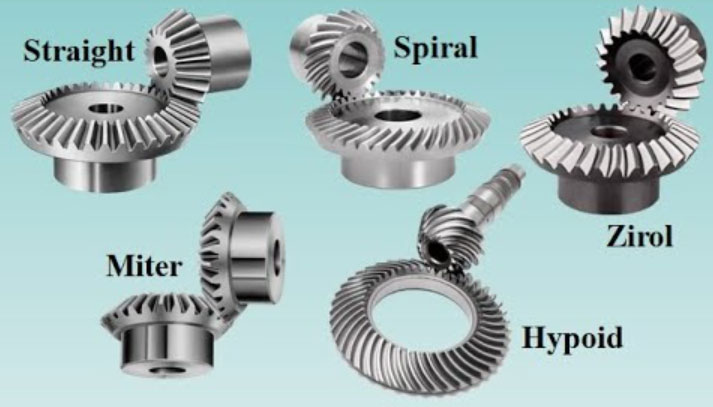Bevel gears play a vital role in improving energy efficiency in various industrial applications. Here are some ways in which bevel gears contribute to energy efficiency:

- Power Transmission Efficiency: Bevel gears are commonly used to transmit power between intersecting shafts. Their precise tooth engagement and high gear meshing efficiency enable efficient power transfer with minimal energy loss. Bevel gears with optimized tooth profiles and accurate manufacturing tolerances help reduce friction and improve overall power transmission efficiency.
- Speed Control and Reduction: In many industrial applications, bevel gears are employed to control and reduce rotational speed. By using gear ratios, bevel gears allow the conversion of high-speed input to lower speed output, matching the operational requirements of different machinery or equipment. This speed reduction optimizes the energy consumption of downstream components, such as motors, by operating them at their most efficient speed range.
- Compact Design and Space Optimization: Bevel gears offer a compact and space-saving solution in industrial applications. Their ability to transmit power at various angles and directions allows the design of machinery and equipment with smaller footprints. Compact designs help reduce energy losses associated with long power transmission paths and inefficient layouts. Additionally, optimized gear arrangements enable efficient use of available space, allowing for more streamlined and energy-efficient industrial systems.
- Load Distribution and Balance: Bevel gears contribute to energy efficiency by effectively distributing loads across multiple gear teeth. By sharing the load, individual teeth experience reduced stress, minimizing wear and increasing gear system longevity. Additionally, well-designed bevel gears ensure proper load balance, preventing excessive forces on specific gear teeth, which can lead to premature failure and increased energy consumption.
- Noise and Vibration Reduction: Efficient bevel gear designs contribute to energy efficiency by minimizing noise and vibration. Well-meshed bevel gears with optimized tooth profiles and accurate manufacturing tolerances reduce gear-induced vibrations and associated energy losses. Reduced noise and vibration levels also indicate smoother gear operation and lower frictional losses, leading to improved overall energy efficiency.
- Optimal Power Distribution: In industrial applications with complex power distribution systems, bevel gears help optimize power flow and distribution. By efficiently transmitting power at different angles and directions, bevel gears enable the effective routing of energy to various components or subsystems. This ensures that energy is directed to the required locations without unnecessary losses, improving the overall energy efficiency of the system.
- Customization and System Integration: Bevel gears can be customized to specific application requirements, ensuring the optimal integration of power transmission systems. By selecting the appropriate gear types, tooth profiles, and gear ratios, engineers can tailor bevel gears to match the specific load, speed, and torque requirements of industrial machinery. Customized gear solutions enhance energy efficiency by minimizing power losses, optimizing system performance, and reducing unnecessary energy consumption.
Efficient and well-designed bevel gear systems contribute to energy savings, reduced operating costs, and improved overall system performance in industrial applications. It is important for engineers to consider factors such as gear design, material selection, lubrication, and maintenance practices to maximize the energy efficiency benefits provided by bevel gears.
